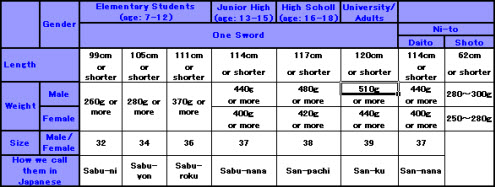You Got It!
Kendo Stick: Shinai
Kendo stick or shinai is made of 4 pieces of bamboo and used in kendo. The Japanese character (kanji) for shinai is “bamboo sword”. Thus, those who practice kendo (kendo-ka) treat shinais as real swords.
Shinai is made of bamboo because it does not hurt training partners during training.
We have another kind of shinai called carbon shinai that is made of carbon fibre. It is expensive but will last longer than bamboo shinai.
A bit of history of shinai
In old days, kendo practitioners, a.k.a. samurai warriors, used a habiki(a sword without a sharp edge) or bokuto (a wooden sword) to practice.
Apparently, there were not a few who died or seriously injured during training.
However, there was a great invention that is considered to be the origin of shinai. It is said that the founder of Shinkage Ryu, Nobutsuna Kamiizumi, invented hikihada-shinai. Hikihada-shinai is still used in some traditional kenjutsu schools such as Yagyu Shinkage Ryu.
Hikihada-shinai is made of bamboo. The one end of hikihada-shinai is split into 8 or 16 pieces. And the bamboo is covered by leather sleeve like putting a leather bag (fukuro in Japanese) on the bamboo. It is called fukuro-shinai as well because of the bag shaped leather.
The word, hikihada (skin of hiki), is used because it looks like the back of hikigaeru, a toad in Japanese, after the leather is lacquered to keep it from deterioration.
Shinai length and weight
Shinai we use in kendo now varies in length and weight. People often wonder how they should choose a shinai that suits them. Unfortunately, the length and weight are regulated by All Japan Kendo Federation (or International Kendo Federation). See the table below.
Basically, we choose a shinai by our age not by physical features. You may feel it is not fair because you may think that people with long arms should use shorter shinai. But you may also notice the physical features do not really matter in kendo.
Even though we have to follow the regulations, in training we can use a shorter shinai or lighter shinai or heavier shinai than what the regulations say. We should be able to control various kinds of shinai. Why?
After all, kendo is to improve ourselves. You are challenging yourself by changing your shinai length and weight. If you use a shorter shinai than your opponent, it is harder for you to strike your opponent. If you use a heavier shinai than your regular shinai and your opponent, it is harder for you to strike.
You may think that a lighter shinai has more advantages, but if you are not used to use such a shinai, you find it very hard to control and perform ki-ken-tai-icchi.
I do not suggest experimenting different types of shinai until you aresho dan or above. Preferably I want you to be 3rd dan or above or you should have 5 years or more experience in kendo. It is because you would not know what you are doing wrong if you do not have much experience.
Shinai adjustment
When you are experienced enough to know what you are doing with your kendo, you can adjust your shinai length. We can only make ashinai shorter, not longer. It is strictly prohibited to put a weight insideshinai so please do not do that. You may seriously damage your training partners.
Click here to read more about how to make a shinai shorter...
Shinai maintenance
Shinai has to be checked before, during and after training. Basically all the time. Kendo is very safe but if our shinai is broken kendo becomes a deadly martial art. There have been many unfortunate accidents caused by broken shinai. Some died. Some lost their eye sight. Some got stabbed in their arms.
Shinai has to be checked all the time and maintained very well. If we can maintain our shinai well, kendo is not dangerous at all. So please learn how to maintain your shinai.
Shinai should be treated as a sword and with a great care and responsibility. It is not a toy or just a tool.
Click here to read more about how to maintain your shiniai...


